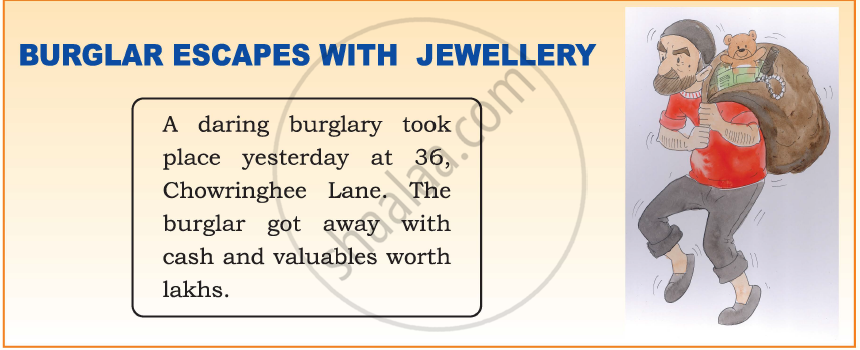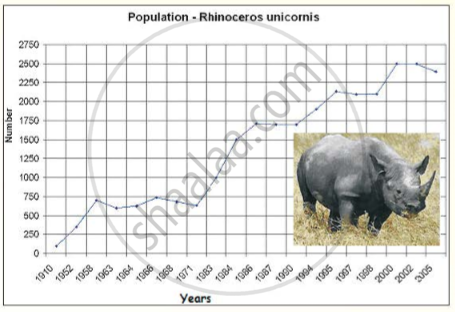Advertisements
Advertisements
प्रश्न
Mr. Oliver, an Anglo-Indian teacher, was returning to his school late one night on the outskirts of the hill station of Shimla. The school was conducted on English public school lines and the boys – most of them from well-to-do Indian families – wore blazers, caps and ties. “Life” magazine, in a feature on India, had once called this school the Eton of the East.
Mr. Oliver had been teaching in this school for several years. He’s no longer there. The Shimla Bazaar, with its cinemas and restaurants, was about two miles from the school; and Mr. Oliver, a bachelor, usually strolled into the town in the evening returning after dark, when he would take short cut through a pine forest.
Read the extract given below and answer the question that follow.
Which route did Mr Oliver take on his way back?
उत्तर
Mr Oliver took the shortcut through the pine forest.
APPEARS IN
संबंधित प्रश्न
Thinking about the Poem
What do the following phrases mean to you? Discuss in class.
(i) humid shadows
(ii) starry spheres
(iii) what a bliss
(iv) a thousand dreamy fancies into busy being start
(v) a thousand recollections weave their air-threads into woof
Thinking about Poem
Can a “simple jab of the knife” kill a tree? Why not?
Read the newspaper clipping.

Listen to an interview between the police inspector in charge of the case, the housekeeper, Ms. Lakshmi and the watchman, Ram Singh. As you listen, note down the details of the burglar.
Inspector: Hello, madam. I am Inspector Maan Singh. I am in charge of the burglary
case which occurred in the flat of your employer, Mr. Ravikant. It must have
been a harrowing experience for you.
Lakshmi: Yes, it was a terrible experience. People like that should be locked up in a
prison.
Inspector: If you will cooperate with us, we will catch them in no time. Were you alone
in the apartment at that time?
Lakshmi: Yes, it was 11 :30 in the night and I was alone as my master and his wife had
left for Shimla.
Inspector: How do you think the burglar gained entry into the house?
Lakshmi: He might have come through the balcony and entered my room.
Inspector: Now tell me something about his physique. What about his build? How tall
was he?
Lakshmi: He was about 6 ft tall.
Inspector: What about his physique?
Lakshmi: He was not thin. He was well-built and rather plump.
Inspector: What about his dress? What was he wearing?
Lakshmi: I think his clothes were rather old and faded. He was wearing a black shirt
which was faded.
Inspector: Do you remember the colour of his trousers?
Lakshmi: They were of a dark shade -either black or blue.
Inspector: Can you tell me something about his face?
Lakshmi: Unfortunately no. When he entered my room I panicked. But then I
gathered courage and screamed and tried to run away. But I was a bit late.
He struck me with a staff and I really don't remember anything after that.
May be I was knocked out.
Later on, I came to know that he broke into the bedroom and ran off with the
jewellery. But Ram Singh, the watchman, who tried to catch him may be
able to describe him better.
Inspector: OK Lakshmi, thank you! If I need your help I will come again. You may have
to identify the burglar. Now, I will speak to Ram Singh.
Inspector to Ram Singh:
Ram Singh you were on duty and you tried to catch the burglar. You may be
able to give a good description of him. First, tell me about his hair.
Ram Singh: He had straight black hair.
Inspector: What about the shape of his face and his complexion?
Ram Singh: He had an oval face with grey eyes and I think he was dark complexioned.
Inspector: Did he wear spectacles?
Ram Singh: Yes, with a plastic frame and his nose was rather sharp.
Inspector: What else can you remember about him? What about his teeth and lips?
Ram Singh: His lips were quite thick.
Inspector: Is there anything else that you remember about him?
Ram Singh: When I heard some noise from inside, I ran in. I tried to stop the burglar and
we had a scuffie. During the struggle I noticed that he had six fingers on his
right hand. But he managed to run away and made good his escape on a
motorbike.
Inspector: Thank you Ram Singh. We will make sketches on the basis of your
description and nab him.
Read this article about the great Indian Rhinoceros. [You will find the information useful for your group discussion in 5.]
The Indian Rhinoceros or the Great One-Horned Rhinoceros or the Asian Onehorned Rhinoceros (Rhinoceros unicomis) is a large mammal primarily found in north-eastern India, Nepal and parts of Bhutan. It is confined to the tall grasslands and forests in the foothills of the Himalayas.
The Indian Rhinoceros once ranged throughout the entire stretch of the Indo Gangetic Plain but excessive hunting reduced their natural habitat drastically.
Today, about 3,000 Indian Rhinos live in the wild, 1,800 of which are found in Assam alone. In 2008, more than 400 Indian Rhinos were sighted in Nepal's Chitwan National Park.
In size it is equal to that of the White Rhino in Africa; together they are the largest of all rhino species. The Great One-Horned Rhinoceros has a single horn; this is present in both males and females, but not on newborn young. In most adults, the horn reachee a length of about 25 centimetres, but has been recorded up to 57 .2 centimetres in length. The nasal hom curves backwards from the nose. The horn is naturally black.
This prehistoric-looking rhinoceros bas thick, silver-brown skin which becomes pinkish near the large skin folds that cover its body. The male develops thick neckfolds. It has very little body hair aside from eyelashes, ear-fringes and tail-brush.
These rhinos live in tall grasslands and riverine forests, but due to the loss of habitat, they have been forced towards cultivated land. They are mostly solitary creatures, with the exception of mothers and calves and breeding pairs, although they sometimes, congregate at bathing areas.

The Indian Rhinoceros makes a wide variety of vocalizations. At least ten distinct vocalizations have been identified: snorting, honking, bleating, roaring, squeak panting, moo-grunting, shrieking, groaning, rumbling and humphing. In addition to noises, the rhino also uses olfactory communication.
In aggregation, Indian Rhinos are often friendly. They will often greet each other by waving or bobbing their heads, mounting flanks, nuzzling noses, or licking. Rhinos will playfully spar, run around, and play with twigs in their mouth. Adult males are the primary instigators of fights. Fights between dominant males are the most common cause of rhino mortality. Indian rhinos have few natural enemies, except for tigers. Tigers sometimes kill unguarded calves, but adult rhinos are less vulnerable due to their size. Humans are the only other animal threat, hunting the rhinoceros primarily for sport or for the use of its horn. Indian Rhinos have been somewhat tamed and trained in circuses, but they remain dangerous and unpredictable animals.
In the nineteenth and early twentieth century, the Indian Rhinoceros was hunted relentlessly. Reports from the middle of the nineteenth century claim that some military officers in Assam individually shot more than 200 rhinos. In the early 1900s, officials became concerned at the rhinos' plummeting numbers. By 1908 in Kaziranga, one of the Rhinos' main ranges, the population had fallen to around 12 individuals. In 1910, all rhino hunting in India became prohibited.
The rhino has been a major success in conservation. Only 100 remained in the early 1900s; a century later, their population has increased to about 2500 again, but even so, the species is still endangered. The Indian rhino is illegally poached for its horn. Some cultures in East Asia believe that the hair has healing and potency powers and therefore is used for traditional Chinese medicine and other Oriental medicines.
The Indian and Nepalese Governments have taken major steps towards Indian Rhinoceros conservation with the help of the World Wildlife Fund (WWF). The Kaziranga National Park and Manas National Park in Assam, Pobitora Reserve Forest in Assam {having the highest Indian rhino density in the world), Orang National Park of Assam, Laokhowa Reserve Forest of Assam (having a very small population) and Royal Chitwan National Park in Nepal are homes to this endangered animal.
What does he plant who plants a tree? a
He plants a friend of sun and sky;b
He plants the flag of breezes free;
The shaft of beauty, towering high;
He plants a home to heaven anigh;
For song and mother-croon of bird
In hushed and happy twilight heard____
The treble of heaven's harmony_____
These things he plants who plants a tree.
Read the lines given above and answer the question that follow:
Describe the king in your own words.
How did the old clock give a timeless message through Ray?
What are some of the particular habits of the mongoose and the camel?
Do you remember an anecdote or a story about a greedy or jealous person and the unhappy result of his/her action? Narrate the story to others in your class.
Here is one for you to read.
Seeing an old man planting a fig tree, the king asked why he was doing this. The man replied that he might live to eat the fruit, and, even if he did not, his son would enjoy the figs.
“Well,” said the king, “if you do live to eat the fruit of this tree, please let me know.” The man promised to do so, and sure enough, before too long, the tree grew and bore fruit.
Packing some fine figs in a basket, the old man set out for the palace to meet the king.
The king accepted the gift and gave orders that the old man’s basket be filled with gold.
Now, next door to the old man, there lived a greedy old man jealous of his neighbour’s good fortune. He also packed some figs in a basket and took them to the palace in the hope of getting gold.
The king, on learning the man’s motive, ordered him to stand in the compound and had him pelted with figs. The old man returned home and told his wife the sad story. She consoled him by saying, “You should be thankful that our neighbour did not grow coconuts.”
Study the following phrases and their meanings. Use them appropriately to complete the sentences that follow.
I promise to ………….. on your brother when I visit Lucknow next.
